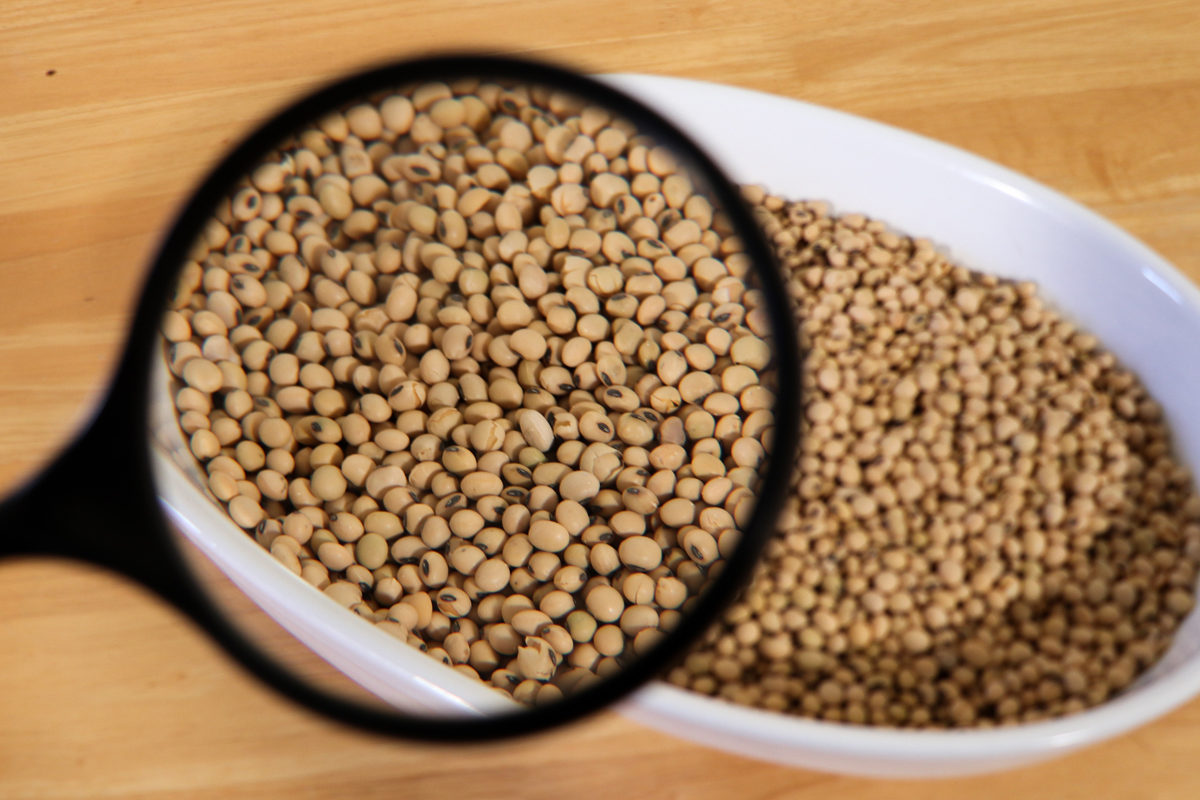What Are Soybeans Used For?

*Last updated June 10, 2022*
Soybeans. They grow in your fields, fill your bins and provide you a return on your investment and hard work at the end of the season. But they’re so much more.
Over 515,000 soybean farmers, just like YOU, grow soybeans across the U.S., and after you deliver them, you see your checkoff investment on your check. That investment drives soybean research, promotion and education efforts to build additional farm-level value. Because the most important thing your checkoff can do is help you thrive.
Here are a few examples of how your soybeans meet demand around the world — and how your checkoff is making moves for you.
Animal nutrition
Global animal agriculture is your No. 1 customer. Producers rely on your high-quality feed to nourish animals like chickens, pigs, turkeys, cattle and fish that thrive on nutrient-dense soybean meal. They need reliable levels of quality protein and digestible energy to grow, all found in soybean meal from your crop.
According to data resources funded by your soy checkoff as well as USDA, the soybean meal fed in the U.S. goes to several segments of animal agriculture.
- Poultry eats about 61.2%.
- Hogs consume 18%.
- Beef and dairy cattle use just over 18%.
- The rest goes to aquatic farming like fish and shrimp, other farm animals and companion animals like horses and pets.
U.S. soybean meal doesn’t just feed livestock and help them thrive; it helps farmers like you remain profitable. Results from a study funded by the soy checkoff confirms the positive relationship between soybean meal and improved total weight gain and feed use efficiency in growing pigs.
Countries around the world import U.S. soybeans to feed their livestock, too. For example, your soybeans travel to feed poultry in Columbia, pigs in the European Union, fish in Southeast Asia and much more, according to the U.S. Soybean Export Council.
Human nutrition
Of course, people need high-quality protein, too. Your soybeans deliver a vegetable protein option alongside essential amino acids and nutrients in many forms.
Most of the time, foods incorporate your soybeans after they’ve been crushed. Soybean meal provides protein in foods like protein bars, meat alternatives and soy milk. The FDA has reviewed research that says 25 grams of soy protein a day, as part of a diet low in saturated fat and cholesterol, may reduce the risk of heart disease. Food companies are permitted to use that claim on labels.
Your soybean oil also is in high demand from the food industry. Soybean oil remains the most common vegetable oil in the U.S. and is often labeled and sold as just that — vegetable oil. In fact, 52.3% of the soybean oil used in the U.S. goes to the food industry.
- Food companies and restaurants rely on it for frying, baking and other food preparation. High oleic soybean oil excels in high-heat uses like frying.
- Soy lecithin adds and protects texture and flavor in many foods.
- In the grocery store, pure vegetable oil, salad dressings, spreads and more contain soybean oil.
- High oleic soybean oil is a source of omega-3 with zero grams trans fat.
Non-food uses
As a renewable, reliable resource, demand for your soybeans goes far beyond food and feed. Soybean oil and meal can replace petroleum and other volatile ingredients in many industrial and consumer products.
The primary example is biodiesel, a cleaner-burning, renewable alternative to petroleum diesel. Biodiesel blended into diesel used in the U.S. transportation fuel supply reduces greenhouse gas emissions by up to 86%. It also eases dependence on fossil fuels often refined from foreign oil. U.S. consumers used nearly 2 billion gallons of biodiesel in 2020. Soybean oil accounts for about half the feedstock used to produce biodiesel.
In a wide variety of uses, soybean components:
- Allow manufacturers to replace petroleum-based materials.
- Help satisfy demand for sustainable, environmentally friendly products.
- Increase product performance.
For example, Goodyear and the United Soybean Board funded research that discovered using soybean oil in tires resulted in better traction in wet and winter conditions. The company launched four lines of soy-based tires offered in a wide range of cars, minivans and SUVs on the road today. Building on this success, Goodyear intends to increase its use of soybean oil by more than 25% and replace all petroleum-derived processing oils with soybean oil in its tires by 2040.
Uses for soy-based products continue to expand, with the soy checkoff’s Soy Products Guide containing more than 1,000 items currently on the market — from flooring and roofing products to candles and personal care items.
Growing Demand for YOU
Because of your checkoff investment, you can focus on growing your soybeans while your soy checkoff is hard at work growing value for U.S. soy farmers by investing in research, education and promotion of U.S. soybeans.
Soybeans impact feed, food, fuel and countless other areas. And your investment in those areas and beyond, supports your bottom line. Get more information on how your soy checkoff is working for YOU and your soybeans.



